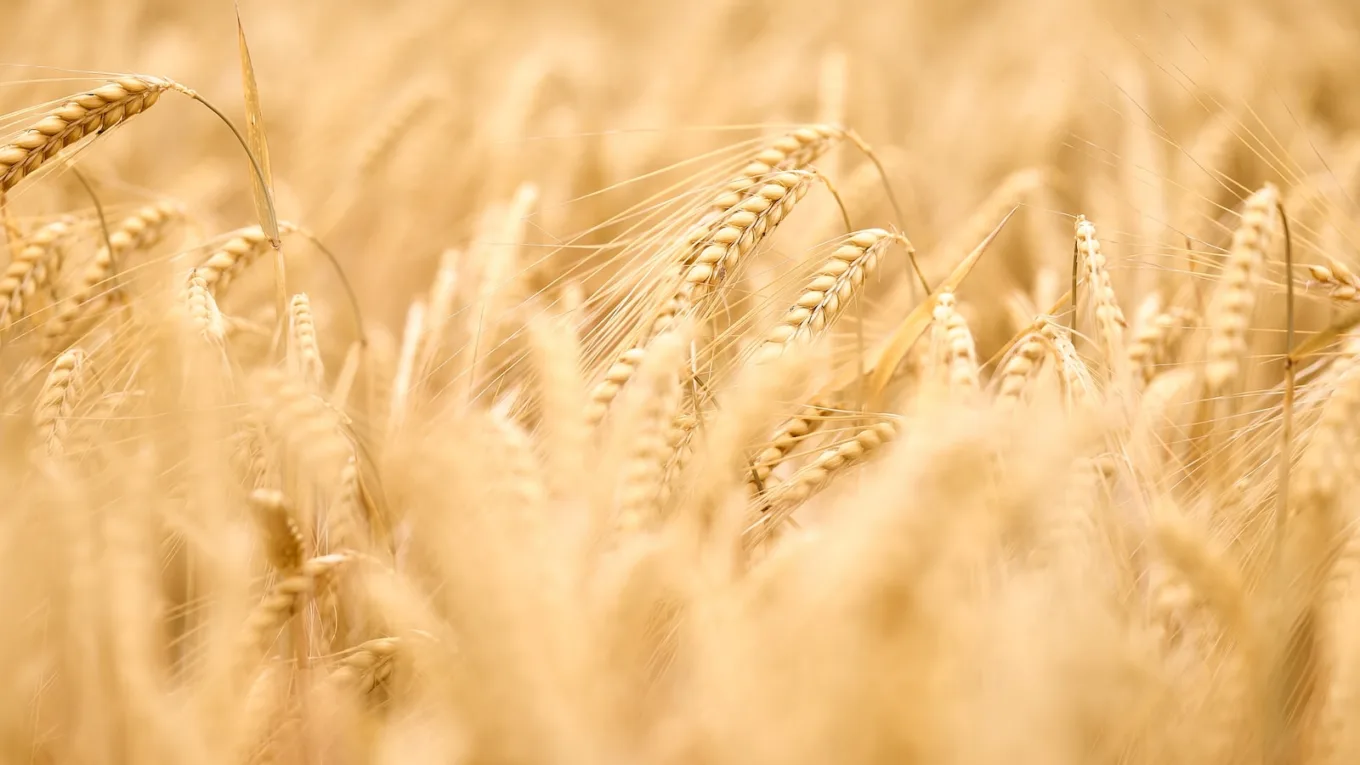Are you missing out on the miraculous grain Barley?
Barley is a versatile cereal grain that has been consumed by humans for thousands of years. It is not only a staple food in many cultures but also offers several health benefits. Packed with essential nutrients, including manganese, selenium, phosphorus, magnesium, niacin (vitamin B3), and vitamin B6, barley offers a holistic approach to well-being. Embracing versatility, barley finds a place in a wide array of dishes, from hearty soups and stews to refreshing salads, making it not only a nutritional powerhouse but also a flavorful and adaptable addition to a well-rounded diet. As individuals explore dietary choices for overall health, the enduring benefits of barley make it a grain worthy of consideration in promoting holistic well-being.
Why (eat) Barley?

- Nutrient-Rich: Barley is a good source of essential nutrients, including fiber, vitamins, and minerals. It contains nutrients such as manganese, selenium, phosphorus, magnesium, niacin (vitamin B3), and vitamin B6.
- Rich in Fiber: Barley is an excellent source of dietary fiber, particularly beta-glucans. Fiber is essential for digestive health, as it promotes regular bowel movements, helps prevent constipation, and may contribute to weight management.
- Heart Health: The soluble fiber in barley, specifically beta-glucans, has been linked to improved heart health. It can help lower cholesterol levels, reduce blood pressure, and support overall cardiovascular well-being.
- Blood Sugar Control: Barley may have a positive impact on blood sugar levels. The fiber content, along with certain compounds found in barley, can contribute to better blood sugar control. This makes it a potentially beneficial food for individuals with diabetes or those at risk of developing diabetes.
- Weight Management: The high fiber content of barley can contribute to a feeling of fullness, which may help with weight management by reducing overall food intake.
- Antioxidant Properties: Barley contains various antioxidants, including vitamins and minerals, which help neutralize free radicals in the body. Antioxidants play a role in protecting cells from damage and may contribute to overall health.
- Digestive Health: The fiber in barley can promote a healthy digestive system by supporting the growth of beneficial gut bacteria. This can contribute to improved gut health and a reduced risk of certain digestive issues.
- Bone Health: Barley contains important minerals such as phosphorus and magnesium, which are crucial for maintaining healthy bones. These minerals contribute to bone density and may help prevent conditions like osteoporosis.
- Source of Protein: Barley contains protein, although it is not as high in protein as some other grains. Nevertheless, it can still be a valuable source of plant-based protein, particularly when combined with other protein-rich foods.
- Versatility in Cooking: Barley is a versatile ingredient that can be used in various dishes, including soups, stews, salads, and as a side dish. Its versatility makes it easy to incorporate into a balanced and nutritious diet.
What (is inside) Barley?

Barley is a nutritious whole grain that provides a range of essential nutrients. Here are some key nutrients found in barley:
- Dietary Fiber: Barley is an excellent source of dietary fiber, including both soluble and insoluble fiber. The soluble fiber, particularly beta-glucans, contributes to various health benefits, such as improved heart health and blood sugar control.
- Vitamins: Barley contains various vitamins, including B vitamins such as niacin (vitamin B3) and pyridoxine (vitamin B6). These vitamins play essential roles in energy metabolism, nerve function, and the formation of red blood cells.
- Minerals:
- Manganese: Important for bone formation and overall metabolism.
- Selenium: Acts as an antioxidant and is crucial for thyroid function.
- Phosphorus: Essential for bone health and various physiological processes.
- Magnesium: Supports muscle and nerve function, blood glucose control, and bone health.
- Protein: While not as protein-dense as some other grains, barley does contain a moderate amount of protein. It contributes to the overall protein intake in a balanced diet.
- Antioxidants: Barley contains various antioxidants, including phenolic acids and flavonoids. These compounds help neutralize free radicals, protecting cells from oxidative stress and inflammation.
- Beta-Glucans: These are a type of soluble fiber found in barley that has been associated with cholesterol-lowering effects and improved heart health. They also contribute to the fiber content that supports digestive health.
- Carbohydrates: Barley is a good source of complex carbohydrates, providing sustained energy and contributing to the overall carbohydrate content of a balanced diet.
- Omega-3 Fatty Acids: Barley contains small amounts of alpha-linolenic acid (ALA), a plant-based omega-3 fatty acid with potential health benefits.
Where (to find) Barley?

Barley is cultivated in various regions of India, with its cultivation primarily concentrated in states that provide suitable agro-climatic conditions. Here are some of the major barley-producing states in India:
- Rajasthan: Rajasthan is a significant producer of barley in India. The state’s climatic conditions, including cooler temperatures during the Rabi season, make it conducive to barley cultivation.
- Uttar Pradesh: Uttar Pradesh is another important state for barley cultivation. The Rabi season in Uttar Pradesh allows for the growth of winter crops like barley.
- Madhya Pradesh: Madhya Pradesh is known for its diverse agricultural practices, and barley is grown in the state, particularly during the Rabi season.
- Haryana: Haryana is a key contributor to barley production in India. The state’s agricultural landscape is well-suited for the cultivation of winter crops like barley.
- Punjab: Punjab, with its fertile soil and well-established agricultural practices, also participates in barley cultivation during the Rabi season.
How (to eat) Barley?

Barley is a versatile grain that can be used in a variety of dishes, adding a nutty flavor and chewy texture. Here are some popular ways to eat barley by preparing these dishes.
- Barley Soup: Barley is often used in hearty soups. Barley soup can include vegetables, broth, and sometimes meat. It’s a comforting and nutritious dish, with variations found in many cuisines.
- Barley Risotto: Barley can be used as a substitute for rice in risotto dishes. Barley risotto is cooked with broth, wine, and various ingredients like mushrooms, herbs, and Parmesan cheese.
- Barley Salad: Barley salads are a popular and nutritious option. Cooked barley is mixed with an array of fresh vegetables, herbs, and sometimes proteins like grilled chicken or feta cheese. It’s often dressed with a vinaigrette.
- Barley Pilaf: Similar to rice pilaf, barley pilaf is made by cooking barley with aromatics like onions and garlic in broth. It can be customized with additional vegetables, herbs, or nuts for added flavor and texture.
- Barley Porridge: Barley can be used to make a warm and hearty porridge, especially for breakfast. Cooked with milk or water, it can be sweetened with honey, maple syrup, or topped with fruits and nuts.
- Barley Casseroles: Barley can be incorporated into casseroles, providing a wholesome base. It pairs well with vegetables, meats, and savory sauces in baked dishes.
- Barley Bread: Barley flour or cooked barley can be used to make various types of bread, including flatbreads and loaves. These bread options may have a denser texture and a distinctive flavor.
- Barley Rissoles or Patties: Mashed cooked barley can be combined with herbs, spices, and other ingredients to form patties or rissoles. These can be baked or pan-fried for a flavorful and nutritious dish.
- Barley Breakfast Bowls: Create a nutritious breakfast bowl by topping cooked barley with yogurt, fresh fruits, nuts, and a drizzle of honey. This combination provides a satisfying and energy-boosting start to the day.
- Barley-Based Beverages: Barley is used to make beverages like barley water, which can be flavored with lemon, mint, or other herbs. In some cultures, barley is malted and used in the production of malt beverages.










